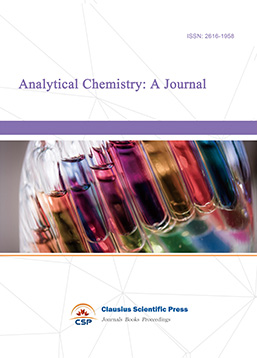Design and Forming of Chemical Nanomaterials and Their Utilization in Energy Storage and Conversion
DOI: 10.23977/jmpd.2024.080105 | Downloads: 26 | Views: 1353
Author(s)
Zhanhong Guo 1, Yadong Liu 2, Luyao Li 2
Affiliation(s)
1 Institute of Chemistry and Chemical Engineering, HFUT (Hefei University of Technology), Xuancheng, Anhui, China
2 Department of Materials Science and Engineering, HFUT (Hefei University of Technology), Xuancheng, Anhui, China
Corresponding Author
Zhanhong GuoABSTRACT
With the gradual depletion of non-renewable energy sources such as fossil fuels such as coal, oil, and natural gas, as well as the intensification of environmental problems such as water during industrialization, the search for new energy sources is currently a research hotspot. However, due to the poor conductivity of traditional metal oxides and their significant volume expansion during charging and discharging, their application in energy storage is greatly limited. The main focus of this article was on the design, fabrication, and application of chemical nanomaterials in energy storage and conversion. Based on the physical plating and chemical dealloying process, S/NPCu materials with high quality and stability were prepared. The morphology and composition of the samples were analyzed using SEM (Scanning Electron Microscope), TEM (Transmission Electron Microscope), XRD (X-ray Diffraction), etc. Using filtered CuKα, X-ray diffraction was measured on an X-ray diffractometer. In the electrode system, measurements were made using a rotary disc electrode using linear sweep voltammetry and cyclic voltammetry. Even when the charging and discharging rate reached 4Ag-1, MnO2 could still reach 1300mAhg-1, indicating that it still had good stability during the charging and discharging process. Therefore, by designing the electrode structure reasonably, it is possible to achieve rapid and stable energy storage of nanomaterials with extremely low conductivity.
KEYWORDS
Chemical Nanomaterials, Energy Storage, Energy Conversion, Lithium-ion Batteries, Oxygen Evolution ReactionsCITE THIS PAPER
Zhanhong Guo, Yadong Liu, Luyao Li, Design and Forming of Chemical Nanomaterials and Their Utilization in Energy Storage and Conversion. Journal of Materials, Processing and Design (2024) Vol. 8: 36-43. DOI: http://dx.doi.org/10.23977/jmpd.2024.080105.
REFERENCES
[1] Zhou Wei, Wu Zhong, Li Tinghu, et al. Preparation and electrochemical properties of iron oxide graphene nanomaterials. Shandong Chemical, 2020, 49 (13): 1-3.
[2] Lu S, Liang J, Long H, et al. Crystal phase control of gold nanomaterials by wet-chemical synthesis. Accounts of Chemical Research, 2020, 53(10): 2106-2118.
[3] Liyanage T, Qamar A Z, Slaughter G. Application of nanomaterials for chemical and biological sensors: A review. IEEE Sensors Journal, 2020, 21(11): 12407-12425.
[4] Zhao H, Li F, Wang S, et al. Wet chemical synthesis of amorphous nanomaterials with well-defined morphologies. Accounts of Materials Research, 2021, 2(9): 804-815.
[5] Sebastian V. Toward continuous production of high-quality nanomaterials using microfluidics: Nanoengineering the shape, structure and chemical composition. Nanoscale, 2022, 14(12): 4411-4447.
[6] Lang R, Du X, Huang Y, et al. Single-atom catalysts based on the metal–oxide interaction. Chemical reviews, 2020, 120(21): 11986-12043.
[7] Li Y, Zhang Y, Qian K, et al. Metal–support interactions in metal/oxide catalysts and oxide–metal interactions in oxide/metal inverse catalysts. ACS Catalysis, 2022, 12(2): 1268-1287.
[8] Karayianni M, Pispas S. Block copolymer solution self‐assembly: Recent advances, emerging trends, and applications. Journal of Polymer Science, 2021, 59(17): 1874-1898.
[9] Shin J J, Kim E J, Ku K H, et al. 100th anniversary of macromolecular science viewpoint: Block copolymer particles: Tuning shape, interfaces, and morphology. ACS Macro Letters, 2020, 9(3): 306-317.
[10] Taylor D, Dalgarno S J, Xu Z, et al. Conjugated porous polymers: incredibly versatile materials with far-reaching applications. Chemical Society Reviews, 2020, 49(12): 3981-4042.
[11] Wang Q, Unno M, Liu H. Organic–inorganic hybrid near-infrared emitting porous polymer for detection and photodegradation of antibiotics. ACS Sustainable Chemistry & Engineering, 2022, 10(22): 7309-7320.
[12] Mansour F R, Arrua R D, Desire C T, et al. Non-ionic surface active agents as additives toward a universal porogen system for porous polymer monoliths. Analytical Chemistry, 2021, 93(5): 2802-2810.
[13] Heard D M, Lennox A J J. Electrode materials in modern organic electrochemistry. Angewandte Chemie International Edition, 2020, 59(43): 18866-18884.
[14] Zhang Y, Jiang J, An Y, et al. Sodium‐ion capacitors: materials, mechanism, and challenges. ChemSusChem, 2020, 13(10): 2522-2539.
[15] Liang J, Liu Q, Li T, et al. Magnetron sputtering enabled sustainable synthesis of nanomaterials for energy electrocatalysis. Green Chemistry, 2021, 23(8): 2834-2867.
| Downloads: | 4087 |
|---|---|
| Visits: | 253362 |
Sponsors, Associates, and Links
-
Forging and Forming

-
Composites and Nano Engineering

-
Metallic foams

-
Smart Structures, Materials and Systems

-
Chemistry and Physics of Polymers

-
Analytical Chemistry: A Journal

-
Modern Physical Chemistry Research

-
Inorganic Chemistry: A Journal

-
Organic Chemistry: A Journal

-
Progress in Materials Chemistry and Physics

-
Transactions on Industrial Catalysis

-
Fuels and Combustion

-
Casting, Welding and Solidification

-
Journal of Membrane Technology

-
Journal of Heat Treatment and Surface Engineering

-
Trends in Biochemical Engineering

-
Ceramic and Glass Technology

-
Transactions on Metals and Alloys

-
High Performance Structures and Materials

-
Rheology Letters

-
Plasticity Frontiers

-
Corrosion and Wear of Materials

-
Fluids, Heat and Mass Transfer

-
International Journal of Geochemistry

-
Diamond and Carbon Materials

-
Advances in Magnetism and Magnetic Materials

-
Advances in Fuel Cell

-
Journal of Biomaterials and Biomechanics


 Download as PDF
Download as PDF